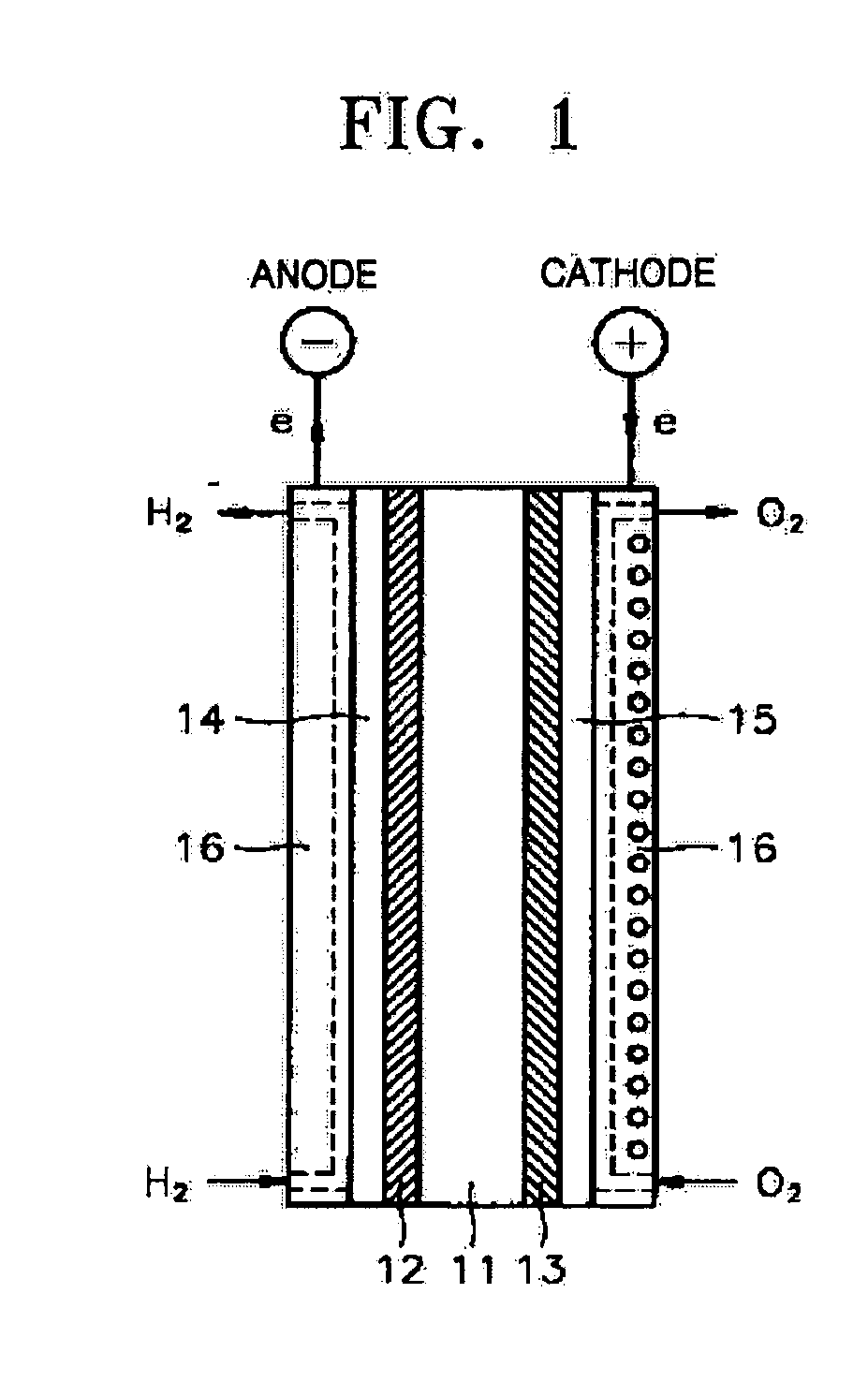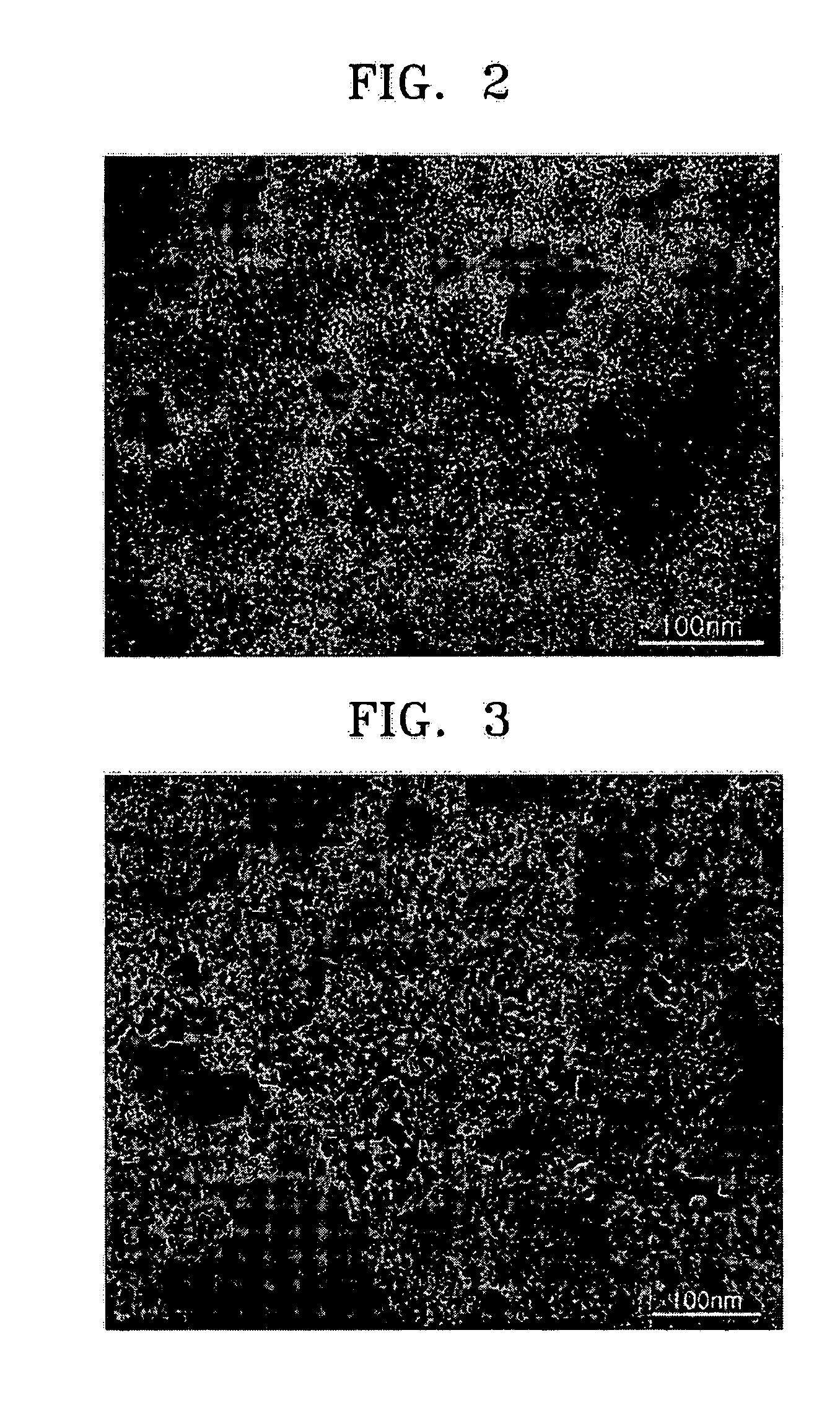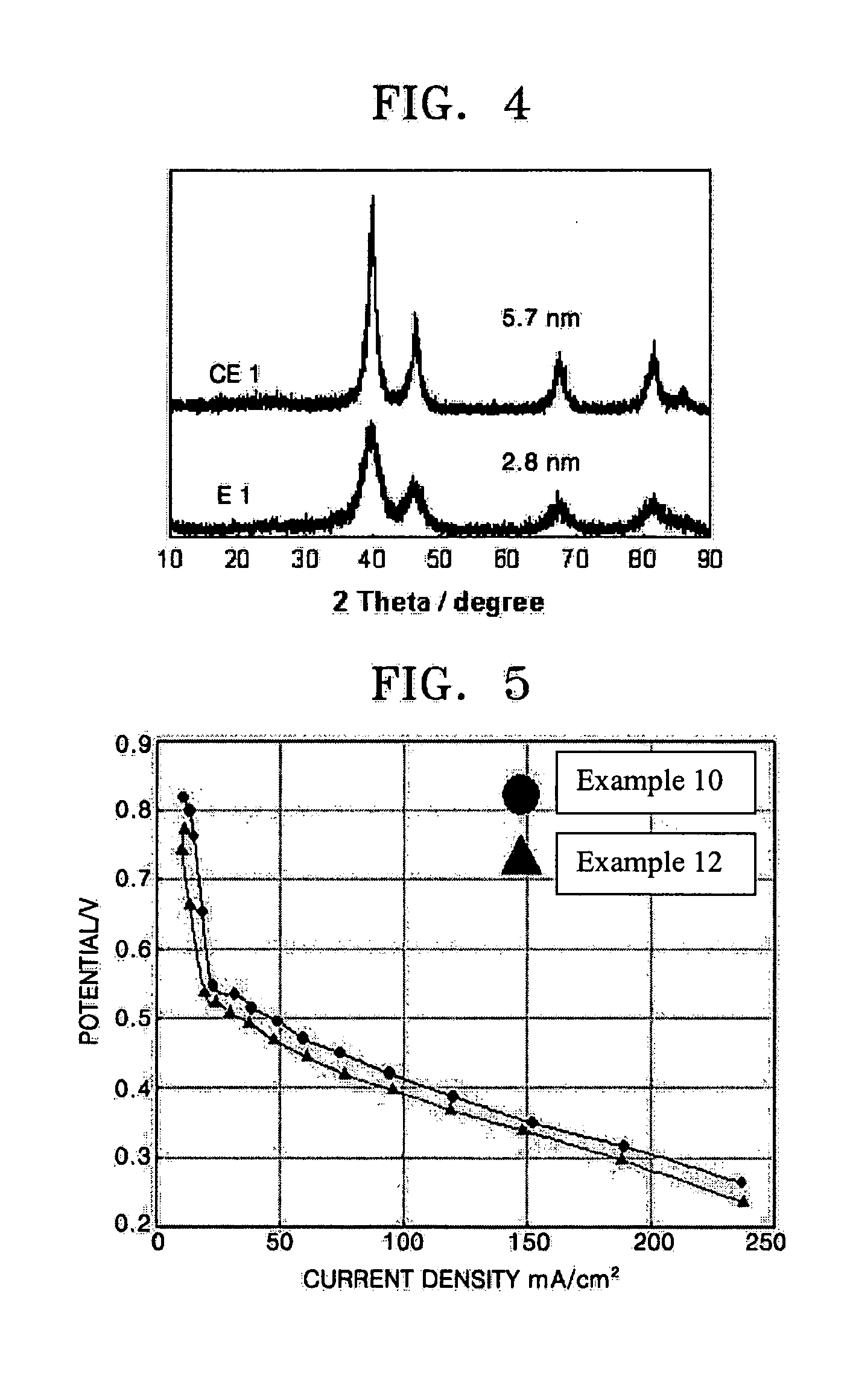High loading supported carbon catalyst, method of preparing the same, catalyst electrode including the same, and fuel cell including the catalyst electrode
- Summary
- Abstract
- Description
- Claims
- Application Information
AI Technical Summary
Benefits of technology
Problems solved by technology
Method used
Image
Examples
specific example 1
Preparation of a Carbon Supported Catalyst
[0039] 0.5 g of KBEC with a specific surface area of 800 m2 / g, as a carbon support, was placed in a plastic bag and 0.9616 g of H2PtCl6 was weighed and dissolved in 0.8 ml of acetone in the beaker. The solution was placed in the plastic bag containing the carbon support and thoroughly mixed. Then, 0.35 ml of acetone was further added into the beaker, placed into the plastic bag and mixed. This process was repeated once again with the total amount of acetone added being 1.5 ml. The mixture was air dried for four hours, and then was transferred to a crucible and dried in an oven at a temperature of 60° C. overnight. Then, the crucible was placed in an electric furnace under a nitrogen atmosphere for 10 minutes. Next, the nitrogen gas was exchanged with hydrogen gas, the temperature in the electric furnace was raised from room temperature to 200° C. and maintained for 2 hours in order to reduce the Pt salt impregnated in the carbon support. Ne...
specific example 2
Preparation of a Carbon Supported Catalyst
[0040] A carbon supported catalyst with an amount of the catalyst impregnated in the first impregnation and an amount of the catalyst impregnated in the second impregnation having a ratio of 0.5:0.5, a total loading of supported Pt equal to 50% by weight, and a specific surface area of 297 m2 / g was obtained in the same manner as in Example 1 except that the amount of H2PtCl6 used in each of the first and second impregnations was 0.6410 g.
specific examples 3-9
Preparation of a Carbon Supported Catalyst
[0041] Carbon supported catalysts were obtained by varying the type of a carbon carrier, the specific surface area of the carbon support, the amount of a catalyst supported in the first and second impregnation, and the ratio thereof, as depicted in Table 1 below. A particle size was calculated by XRD and a specific surface area of the entire carbon impregnated catalyst was determined, which are also shown in Table 1.
TABLE 1SpecificsurfaceAmount of PtAmount of PtEntirearea ofimpregnatedimpregnatedSpecificcarbonin firstin secondImpregnationConcentrationParticlesurfaceExampleCarboncarrierimpregnationimpregnationRatioof PtSizeareaNo.carrier(m2 / g)A(g)B(g)A:B(% by weight)(nm)(m2 / g)1KBEC8000.96160.96165:5602.82532KBEC8000.64100.64105:5502.32973KBEC8000.76921.15384:6603.72604KBEC8001.15380.76926:4604.32505KBEC8001.9232——605.72506VULCAN1951.9232——6015.4757VULCAN1950.96160.96165:56010.3858DENKA641.9232——6013.8259DENKA640.96160.96165:56011.130
PUM
| Property | Measurement | Unit |
|---|---|---|
| Temperature | aaaaa | aaaaa |
| Temperature | aaaaa | aaaaa |
| Temperature | aaaaa | aaaaa |
Abstract
Description
Claims
Application Information
 Login to View More
Login to View More - R&D
- Intellectual Property
- Life Sciences
- Materials
- Tech Scout
- Unparalleled Data Quality
- Higher Quality Content
- 60% Fewer Hallucinations
Browse by: Latest US Patents, China's latest patents, Technical Efficacy Thesaurus, Application Domain, Technology Topic, Popular Technical Reports.
© 2025 PatSnap. All rights reserved.Legal|Privacy policy|Modern Slavery Act Transparency Statement|Sitemap|About US| Contact US: help@patsnap.com



